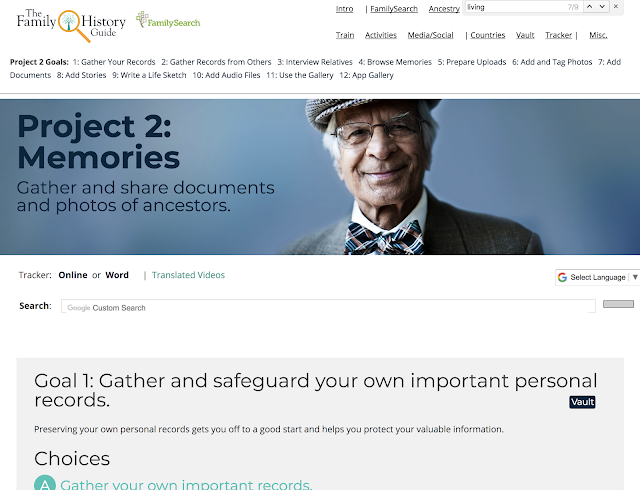The FamilySearch.org Family Tree is essentially a repository for information about dead people. What happens when you add a living person to the Family Tree? What then happens if that person dies?
When you add a living person to the Family Tree, the program puts that newly added living person into your own private "Personal Space" to preserve the privacy of that living person. The program also creates a unique ID number for the person added. The newly added person is also a duplicate if the living person is already in the Family Tree. So, for example, if you add one of your children who is living to the Family Tree and they are already in the Family Tree then your addition is a duplicate of their record with a new ID number.
This process applies to any person added to the tree who is not designated as deceased. For example, if you add a great-grandparent and fail to enter either a death date or the word deceased, then the person is included in your personal "Private Space" automatically.
None of the people marked "Living" are visible to anyone else when they are in your Private Space. Perhaps, one reason for having a personal database outside of the Family Tree is the ability to keep track of living people. There is really no reason to add living people to the Family Tree except to link to older generations through the living ones, but you can do so. You can also add Memories for living people to the family tree. However, if the document and the photo that you add also contains the names or images of dead people and you tag the dead people then all of the people in the document or photo are visible to everyone.
Presently, you cannot add sources or discussions to a living person.
Now, what happens when a person dies? Essentially nothing until you mark a person as the deceased. Once the person is marked as deceased, the entry appears to everyone. If the person is a member of The Church of Jesus Christ of Latter-day Saints then a ward clerk could also mark the person deceased. If this action is taken by a court clerk a new entry for the person appears in my Family Tree. Obviously, this is a duplicate of your entry. These duplicate entries will have to be merged. Who does the merging? You do.
What happens if multiple people have entered the same individual as living into their own personal spaces? Then there are multiple copies of the individual. According to FamilySearch,
Memory items tagged to deceased people are visible to everyone. Untagged memory items or memory items tagged to a living person are not visible to other patrons unless someone shares them using one of our social media tools or by sharing the URL.Here is an extended explanation of adding Memories to living people: "Adding memories of a living person to Family Tree Issues Addressed."
Once a person is marked deceased, the Memories tagged to that individual then become visible to anyone.
If you need a more detailed explanation of Memories, see The Family History Guide section on Memories.







Your comment: "There is really no reason to add living people to the Family Tree". Actually, there is a reason to put living people in the Family Tree. In order to extend a young person's line, there may be one or more living generations that need to be added, so the link to deceased individuals can be made.
ReplyDeleteYes, you are correct. Some of these living additions are unavoidable.
DeleteWhen my grandmother died last year, Family Search automatically combined the records that I had with those of my sons and cousins. When I asked them about it, they said that they choose one record to be the main one and they merge the others in.
ReplyDeleteI understood that they were going to do this, but did not know they had implemented a system. Thanks for the comment.
DeleteThanks! This highlights the reason we need to be careful when we mark someone deceased. Last year, a well-meaning (I'm sure) sister decided my mom had lived long enough and marked her as deceased. I caught the error and got it fixed, but in the interim my mom's records were exposed to the world, with the possibility of identity theft. Fortunately, there were no ill effects from my mother's "death," and the sister apologized profusely for the error.
ReplyDelete